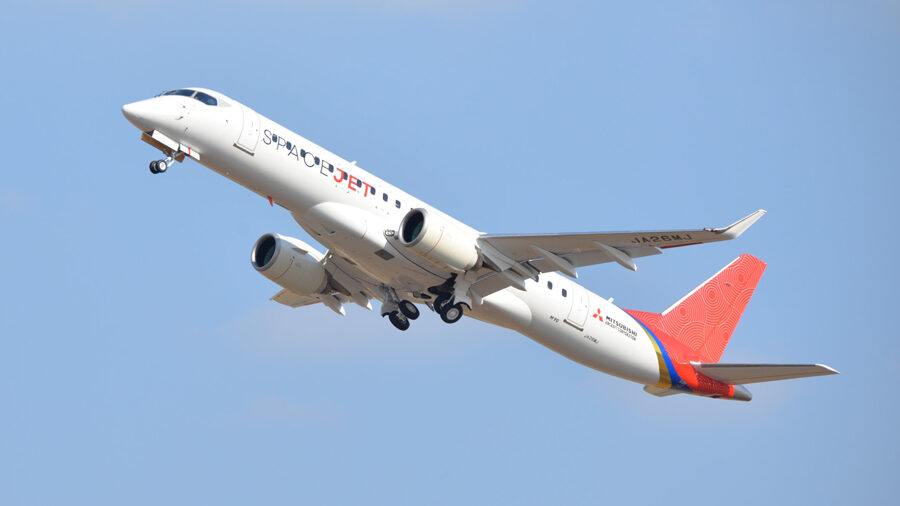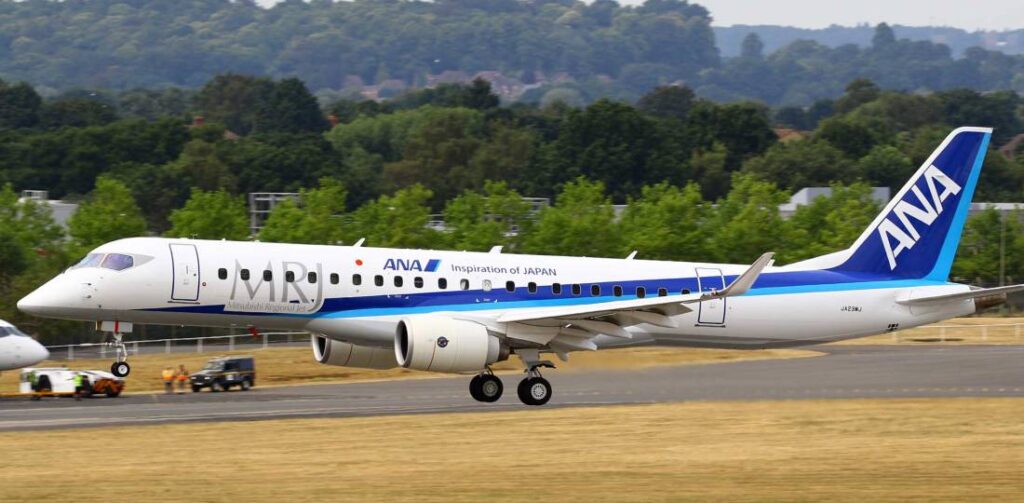“Toward the Resurrection of wings made in Japan‟

(IISIA Researcher’s Report)
In 2020, development of the Mitsubishi Space Jet (MSJ), being developed by Mitsubishi Heavy Industries, a leading Japanese manufacturer, was effectively frozen. The impact of the freeze on the development of MSJ was huge and sent shockwaves both in Japan and abroad. Because MSJ has carried the “dream” of becoming the Japan’s domestically aircraft since the YS-11, which made its first flight in 1962.
(figure: Mitsubishi SpaceJet)

(authority:aviation news)
But in fact, it was probably the right decision to freeze the development of this project. The first reason for this is the heavy responsibility that the aircraft manufacturers must assume. An aircraft carries a large number of personnel at once, and if an incident were to occur, the manufacturer would assume a significant responsibility.
The first question is whether Mitsubishi can assume the full responsibility or not. Secondly, the aircraft industry is also suffering the aftermath of the global “de-carbonization” trend. In this context, the traditional aircraft powered by fossil fuels will be phased out and the development of new aircraft powered by hydrogen will urgently needed.
Under such circumstances, the current MSJ will fall behind the times . In light of this situation, it may no longer be worthwhile to continue the MSJ project at the current stage by spending a large amount of money on it. If this is the case, it would be desirable to stop and make a new effort to develop a new generation of aircraft based on the experience gained through the MSJ project, utilizing Japan’s technological capabilities in cooperation with the aircraft industry overseas.
(figure: Honda Jet in flight)

(authority:Honda official site)
Although the Japanese aircraft industry, with the exception of a few small aircraft such as the “HondaJet”, has not developed commercial aircraft domestically, it has been supplying aircraft parts to large companies such as Boeing. In this sense, it can be said that “Japan’s wings” are still flying even though most of the YS-11s have been retired. We hope to see such wings spreading their wings more and more in the world in the future.
Hiroto HARIMA
Analyst, Global Intelligence Group (GIG)



